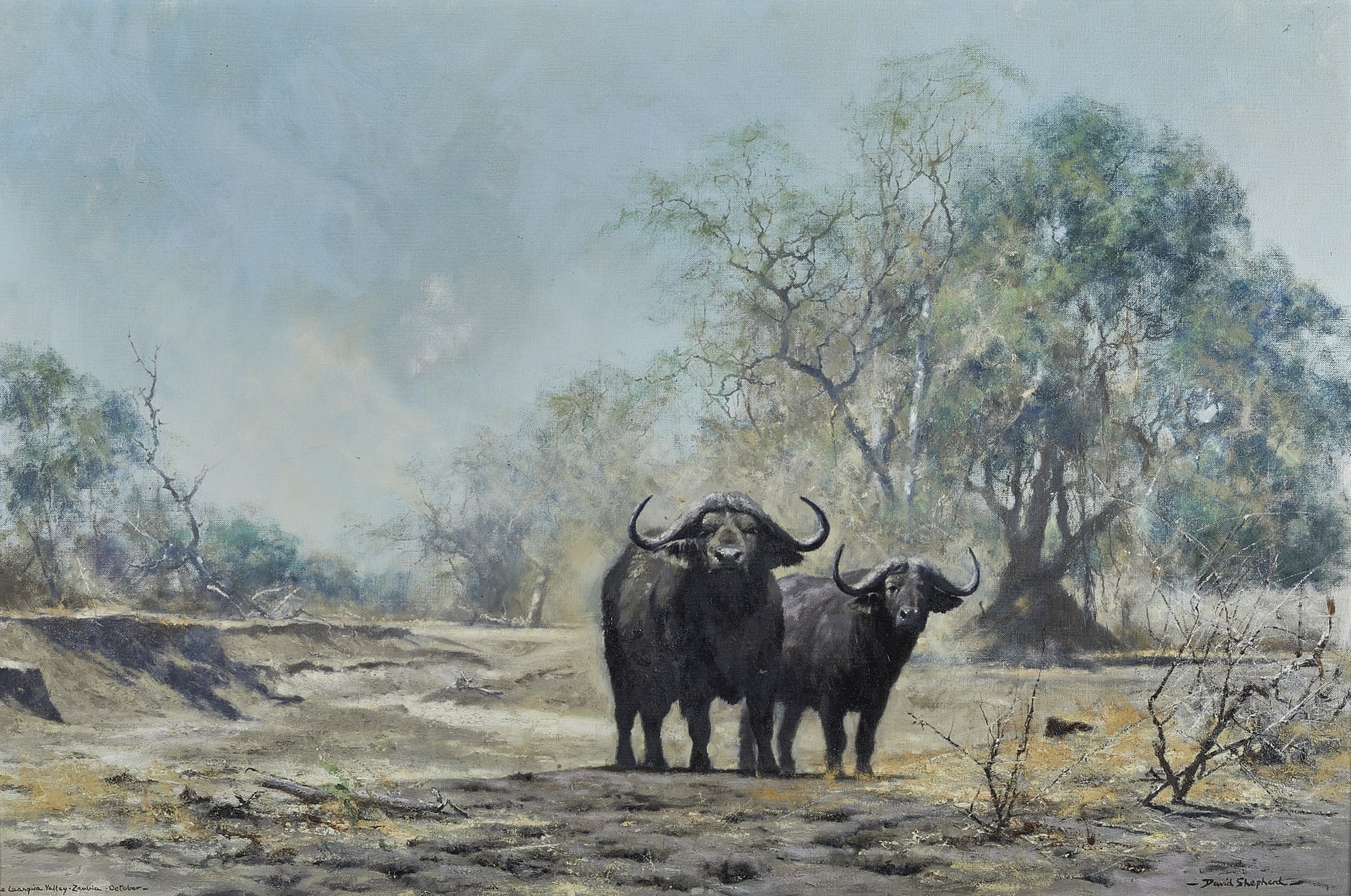David Shepherd, CBE British, 1931-2017
The Luangwa River is one of the major tributaries of the Zambezi River and one of the four biggest rivers of Zambia. It is one the biggest unaltered rivers in Southern Africa and the 20,000 square miles (around 50,000 square kilometres) that make up the surrounding valley are home to abundant wildlife.
The Luangwa rises in the Lilonda and Mafinga Hills in north-east Zambia at around 1,500 metres near the border with Tanzania and Malawi. With flood-plains spanning several kilometres in width, oxbow lakes and abandoned meanders, the river flows in a south-westerly direction through the broad valley that in reaches approximately 100 kilometres wide near Mfuwe.
The upper and middle parts of the valley contain the North Luangwa National Park and South Luangwa National Park. The river itself is home to large populations of hippopotami and crocodiles. The world’s largest concentration of hippos lives in the Luangwa Valley and in the dry season they are restricted by the shrinking river and pools so can be easily seen. In the dry season wildlife, grazing land animals and their predators, congregate near the river and pools but during the rainy season they graze further afield and are well hidden in the growth of new vegetation.
The Luangwa Rift Valley forms a south west extension of the East Africa Rift, branching off its Lake Rukwa-Lake Malawi southern section and reaching almost of far as Lusaka. This junction is not obvious because it is filled with material spewed out from an ancient, extinct volcano. In this part of the valley at least 20 hot springs, characteristic of a rift valley, can be found.
The Luangwa River flows along four-fifths of the Luangwa Rift Valley to the point where it meets the Lukusashi and the Lunsemfwa which have come from the opposite direction. At one time, millions of years ago, there was no way out and the Luangwa Rift filled with a Rift Valley Lake called Madumabisa Lake. Madumabisa Lake rivalled Lake Malawi in size and the water overflowed in to a river south-west towards what is now the Kalahari. Here it combined with the Okavango, Upper Zambezi, Cucando and Kafue river, emptying into the Limpopo River and flowing into the Indian Ocean.
Geological events combined produced the current river systems and faulting lowered the land between the Luangwa Rift and the Zambezi Rift allowing Madumabisa Lake to drain out into the Zambezi through a channel which became known as the Lower Luangwa River.
